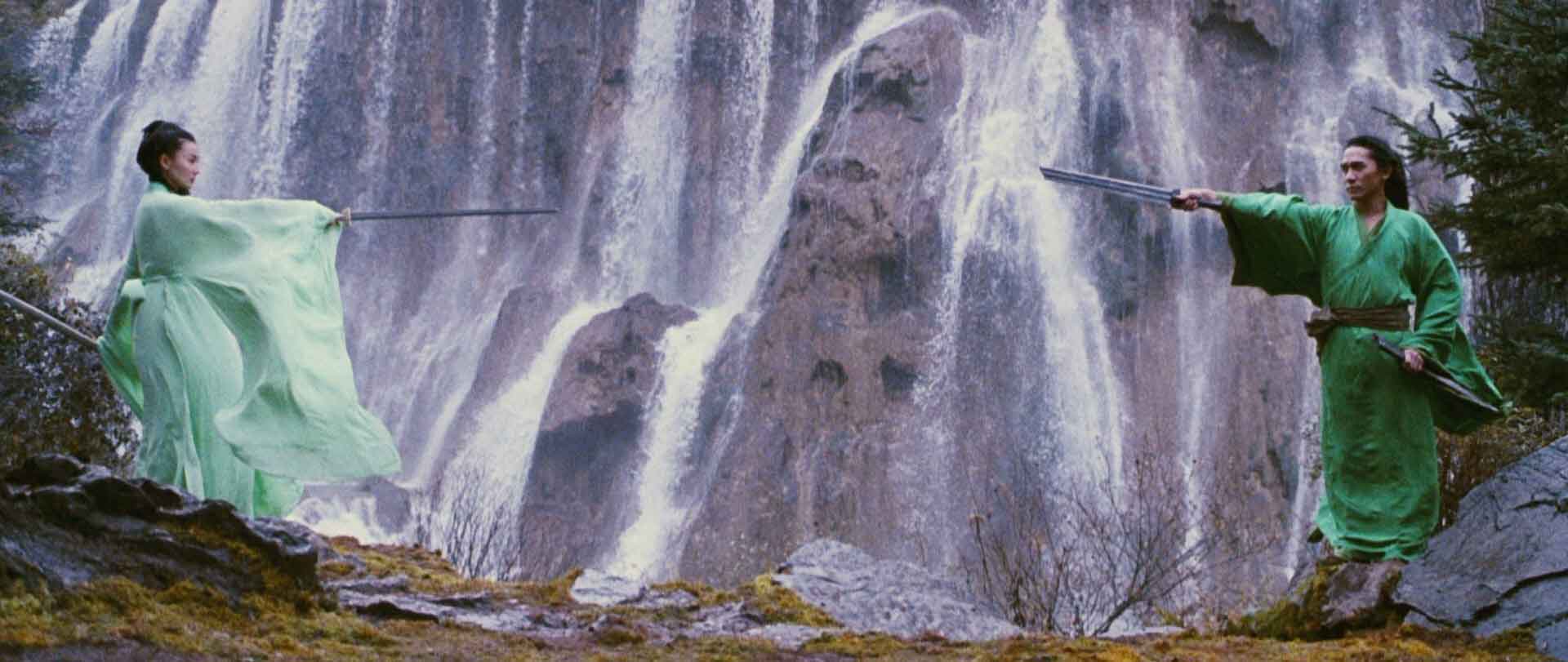
The December 2015 target for the Akira Kurosawa Online Film Club is Zhang Yimou’s 2002 martial arts film Hero.
It is often suggested that Hero‘s story structure shares common DNA with Kurosawa’s Rashomon and therefore belongs to the same group of films such as The Usual Suspects, Les Girls and Hoodwinked!, which we have discussed in the past months during our exploration of the themes present in Rashomon. How strong that connection is, is up for debate and discussion.
Hero came out at a time when highly stylised Chinese martial arts films were enjoying relatively huge commercial success around the world thanks to Crouching Tiger, Hidden Dragon (2000) and House of Flying Daggers (2004 and also directed by Zhang Yimou). In western reviews of these films the name of Akira Kurosawa was often mentioned, not so much in terms of content or even presentation, but more as some kind of a godfather of the genre. Our discussion this month could also look at this aspect of Kurosawa’s legacy, namely his position and influence within the Asian martial arts film history, or if indeed any such link really even exists.
The floor, as always, is yours. The film should be fairly easy to get hold of, and if you are new to the film club, a quick introduction to what we are doing can be found here.






I find films like Hero and the others of that genre beautiful to look at and empty in content. Anyone can borrow from the master.